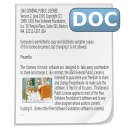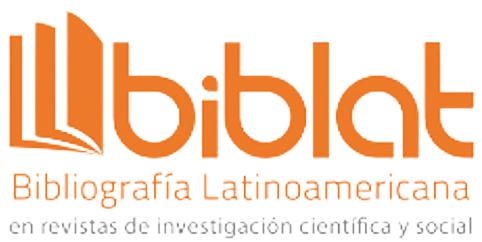Analysis of an input dataset to perform a tonal analysis system
Abstract
Musical analysis is a process that has been carried out for years where different experts have sought to study various musical pieces. This process begins with the learning of tone, note and chord detection, where students have to train their ears to be able to carry it out. In this context, in the following work a decision tree has been made based on a dataset of Bach choirs in order to predict chords from tones. The dataset was divided into 80% to create the tree and 20% for testing, then the data transformation was performed to perform an analysis of the data, with this a decision tree was finally created with a depth of 15 and an accuracy of 75.52%, the tests were finally carried out and we found good results for the accuracy of the tree.
Downloads
References
Raś, Z. W., & Wieczorkowska, A. A. (Eds.). (2010). Advances in Music Information Retrieval. Studies in Computational Intelligence. doi:10.1007/978-3-642-11674-2 DOI: https://doi.org/10.1007/978-3-642-11674-2
R. Esposito and D. P. Radicioni, “CarpeDiem: Optimizing the viterbi algorithm and applications to supervised sequential learning,” J. Mach. Learn. Res., vol. 10, pp. 1851–1880, 2009.
M. Rohrmeier and I. Cross, “Statistical Properties of Tonal Harmony in Bach ’ s Chorales Statistical Properties of Tonal Harmony in Bach ’ s Chorales,” no. January 2008, 2014.
D. P. Radicioni and R. Esposito, “Learning tonal harmony from Bach chorales,” Procs. 7th Int. Conf. Cogn. Model., no. August, 2006.
D. P. Radicioni and R. Esposito, “BREVE: An HMPerceptron-based chord recognition system,” Stud. Comput. Intell., vol. 274, no. December, pp. 143–164, 2010, doi: 10.1007/978-3-642-11674-2_7. DOI: https://doi.org/10.1007/978-3-642-11674-2_7
D. P. Radicioni and R. Esposito, "UCI Machine Learning Repository: Bach Choral Harmony Data Set", Archive.ics.uci.edu, 2014. [Online]. Available: https://archive.ics.uci.edu/ml/datasets/Bach+Choral+Harmony#. [Accessed: 20- Jun- 2022].
I. Bent. "Music analysis in the nineteenth century" 1994. DOI: https://doi.org/10.1017/CBO9780511470257
Federico Sammartino. "Ceros y unos en la musicología. Software y análisis musical". http://resonancias.uc.cl/images/PDFs_n_37/Sammartino.pdf.
P. R. Illescas Casanova. "Análisis tonal asistido por ordenador". Dialnet. https://dialnet.unirioja.es/servlet/tesis?codigo=60733 .
V. Berlanga-Silvente, M. J. Rubio-Hurtado, and R. Vilà-Baños, “Cómo aplicar árboles de decisión en SPSS,” REIRE. Rev. d’Innovació i Recer. en Educ., vol. 6, no. 1, pp. 65–79, 2013, doi: 10.1344/reire2013.6.1615.
D. Tamm, “Road Map,” Dtsch. Arztebl. Int., vol. 115, no. 35–36, p. A1554, 2018, doi: 10.4324/9781003191056-1. DOI: https://doi.org/10.4324/9781003191056-1
“Te damos la bienvenida a Colab.” https://colab.research.google.com/?utm_source=scs-index.
“Python 3.10.6 documentation,” [Online]. Available: https://docs.python.org/3/.
“NumPy.” https://numpy.org/.
“Pandas.” https://pandas.pydata.org/.
“Seaborn.” https://www.w3schools.com/python/numpy/numpy_random_seaborn.asp.
M. C. Ruiz Abellón, “Introducción a los árboles de decisión,” pp. 1–7, 2014, [Online]. Available: http://www.dmae.upct.es/~mcruiz/Telem06/Teoria/arbol_decision.pdf.
P. Samuels, “Pearson Correlation ?,” no. April 2014, pp. 1–5, 2015, [Online]. Available: https://www.researchgate.net/publication/274635640.
- Conceptualization
- Data curation
- Formal Analysis
- Investigation
- Methodology
- Software
- Validation
- Writing - original draft
- Conceptualization
- Data curation
- Formal Analysis
- Investigation
- Methodology
- Software
- Validation
- Writing - original draft
- Conceptualization
- Data curation
- Formal Analysis
- Investigation
- Methodology
- Software
- Validation
- Writing - original draft
- Conceptualization
- Data curation
- Formal Analysis
- Investigation
- Methodology
- Software
- Validation
- Writing - original draft
Copyright (c) 2023 Innovación y Software

This work is licensed under a Creative Commons Attribution 4.0 International License.
The authors exclusively grant the right to publish their article to the Innovation and Software Journal, which may formally edit or modify the approved text to comply with their own editorial standards and with universal grammatical standards, prior to publication; Likewise, our journal may translate the approved manuscripts into as many languages as it deems necessary and disseminates them in several countries, always giving public recognition to the author or authors of the research.
























